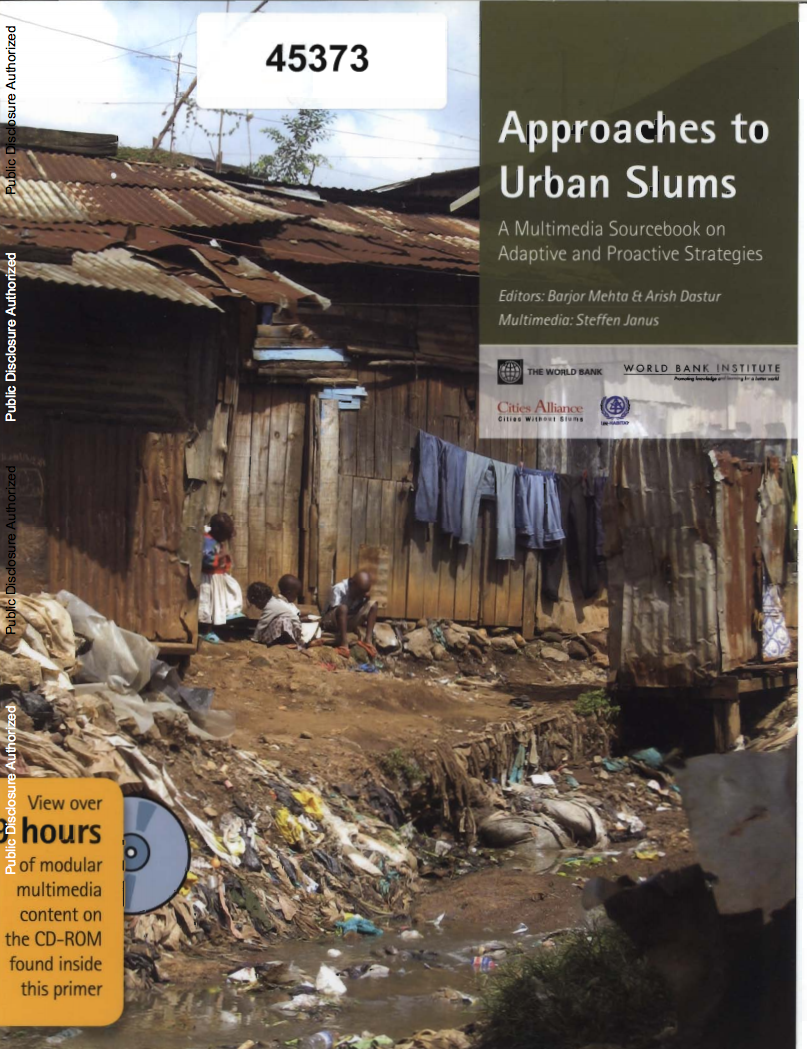Approaches to Urban Slums : A Multimedia Sourcebook on Adaptive and Proactive Strategies
Approaches to urban slums are a
multimedia sourcebook that comprises 14 self-running
audiovisual presentations and 18 video interviews. It is
organized into four broad sections: adaptive approaches,
proactive approaches, case profiles, and thematic
interviews. The sourcebook itself, which contains more than
nine viewing hours of content on CD-ROM, does not exist in
printed format. This guide provides an overview of the


